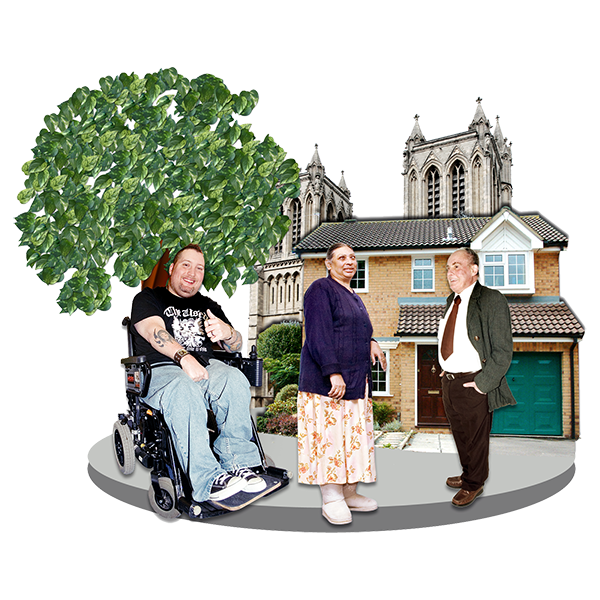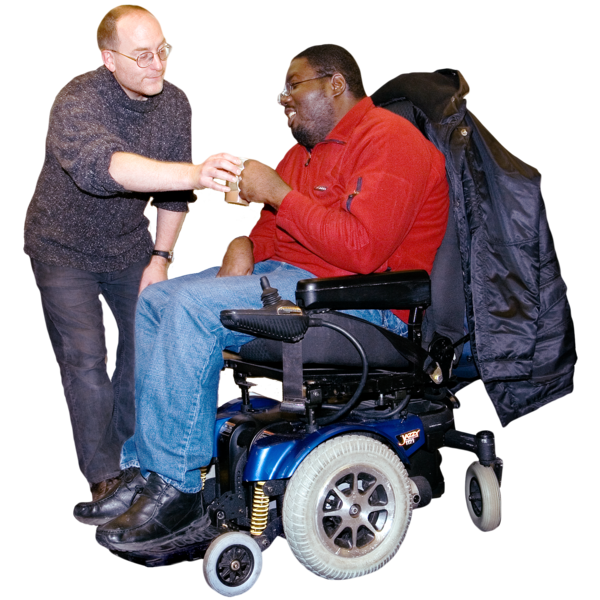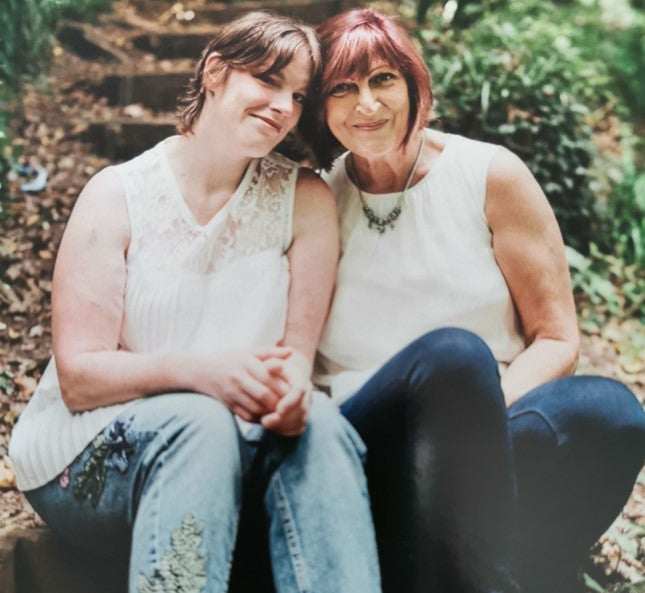From the time Kayleigh was 18 months old, the behaviours started. She found her feet and that was it. We lived in a tiny village which was very protective, so she could not go far without being spotted. She was a little escape artist.
When she was 13, we moved home and area. From a tiny protective
community
 A community is the people and places in an area.
to a city. It got to the point that in a normal home we couldn’t keep her physically safe, we were exhausted. She went to a residential school. She was 15 years old. The placement lasted a year. In the next residential placement (from 16 to 17 years) she hit a member of staff on a Friday afternoon. The police were called and she was taken into custody, then to court the next day.
A community is the people and places in an area.
to a city. It got to the point that in a normal home we couldn’t keep her physically safe, we were exhausted. She went to a residential school. She was 15 years old. The placement lasted a year. In the next residential placement (from 16 to 17 years) she hit a member of staff on a Friday afternoon. The police were called and she was taken into custody, then to court the next day.
The placement closed with immediate effect. The
local authority
 A local authority is also called a
council
A local authority is also called a
council
 A council is also called a local authority. They are a group of people who make decisions about some of the things in the area where you live. These include: schools,
social care
A council is also called a local authority. They are a group of people who make decisions about some of the things in the area where you live. These include: schools,
social care
 Social care means the services that give care and support to people who need it.
(support for people), parks and dustbin collection.
. They are a group of people who make decisions about some of the things in the area where you live like schools, social care (support for people), parks and dustbin collection.
couldn’t find anywhere for her. I was on the phone saying ‘just send her home, while you look for another placement’ but they wouldn’t agree to this as they said she needed 2:1 staffing (for restraint if needed) and they couldn’t find two staff. They couldn’t access any senior managers to authorise her coming home. The courts closed at 1pm and they sent her to prison. I was gutted. Gutted in every way possible because not only had she gone to prison but there was absolutely no need for it.
Social care means the services that give care and support to people who need it.
(support for people), parks and dustbin collection.
. They are a group of people who make decisions about some of the things in the area where you live like schools, social care (support for people), parks and dustbin collection.
couldn’t find anywhere for her. I was on the phone saying ‘just send her home, while you look for another placement’ but they wouldn’t agree to this as they said she needed 2:1 staffing (for restraint if needed) and they couldn’t find two staff. They couldn’t access any senior managers to authorise her coming home. The courts closed at 1pm and they sent her to prison. I was gutted. Gutted in every way possible because not only had she gone to prison but there was absolutely no need for it.

She was charged with common assault. Anyone else would get a suspended sentence or community service. Kayleigh went to prison and stayed 4 months on remand. Her vulnerability could not be managed in a normal wing so she was placed on a health wing with acute mentally ill prisoners. Here, she learnt how to self-harm including cutting herself and tying ligatures to hang herself from a sink tap. I was advised the best option was a ‘welfare bed’ in a unit but there were none available so the criminal route was taken and she was sentenced to a hospital order. This means that you can only be released when the responsible individual says you’re not a danger to yourself or others.
My understanding was that she would be assessed and treated and be back in the community within three to six months - 10 years later I got her out!
Kayleigh lived in Winterbourne View for 3 years before the Panorama documentary. I was told by Winterbourne View that there would be something in the press. I watched Panorama and it just blew me away. Just thinking about it now breaks my heart. I was so shell-shocked.
I had no idea at all what was coming. She was in there being ‘treated’ and she was the one saying to the staff ‘Why are you hurting us?!’ While there Kayleigh made allegations. I would ring and question the manager who always had a logical and appropriate explanation for incidents. There was insurmountable guilt afterwards. I believed and trusted the professionals over my daughter. Winterbourne View was closed a few weeks later and a new placement was needed.
The new place was a new unit with a brand new team. Within a few weeks it had broken down. She’d been pushed, hit and made allegations against staff. I don’t think this was deliberate institutional abuse, more a lack of experience. A rapid move placed her in another unit, and then finally into her own home.
Kayleigh has lived in her own home for seven years. Myself and her brothers live within five miles. She loves her home. She loves being able to go out when and where she chooses. She’s now deemed to have capacity so if she asks her support to ‘go away’ they have to go. That’s when it goes wrong. Generally, it is so much better because she has freedom. She has recently been to Thorpe Park which she loves. So it’s as normal a life as possible.
The downside has been that when she becomes distressed because of her PTSD, she drinks copious amounts of alcohol and plays loud music as a coping mechanism. She’s in a semi-detached house and the neighbour is not sympathetic to trauma. She now has an injunction that says she can’t play music loudly at all. But Kayleigh loves her house and does not want to move.
Kayleigh has an obsession with emergency services. Throughout her seven years she’s been in contact with police, fire and ambulance services. The ambulance service will only attend if her support staff confirm the need. She has a community behaviour order (CBO) and if she contacts them and they deem it not to be an emergency she goes back to court. She’s been in and out of prison five or six times in those seven years. When her mental health is poor she engages the emergency services which breaches her CBO and ends with another prison stay. Kayleigh was under the forensic mental health team but they are so over stretched that if she doesn’t attend an appointment they will close because she isn’t engaging.
Kayleigh needs continuity and to be able to build a trusting relationship with a professional but she’s had five or six different professionals in approximately six months. So the system fails her.
We continue to live life on a knife edge.

 By Mencap
By Mencap